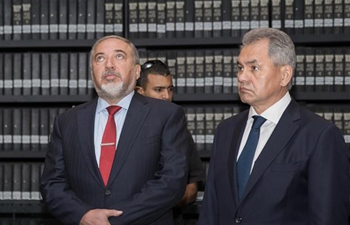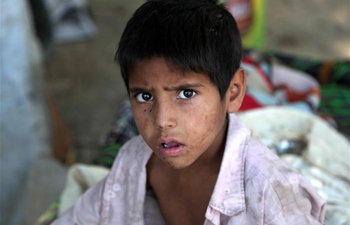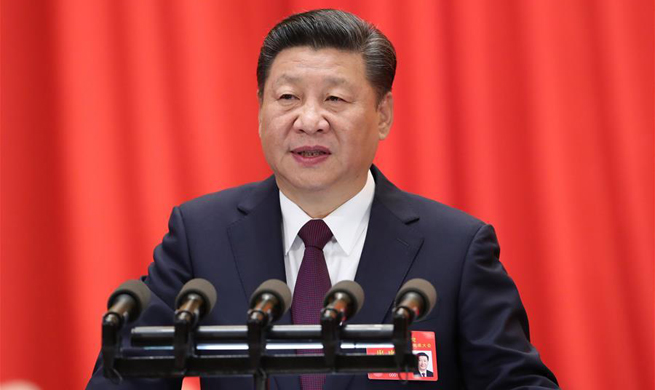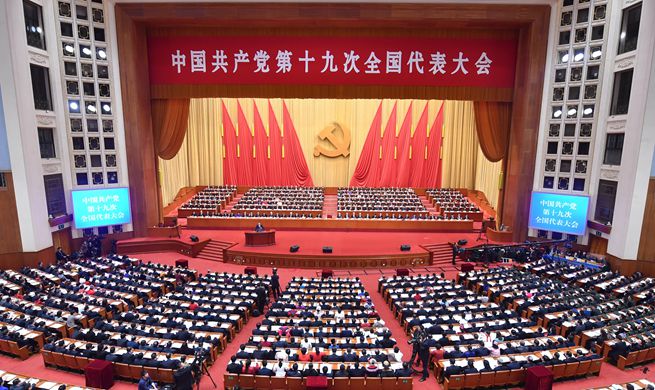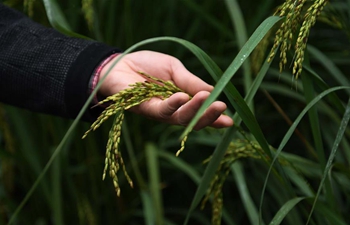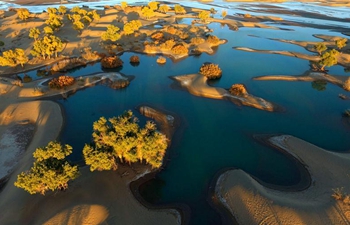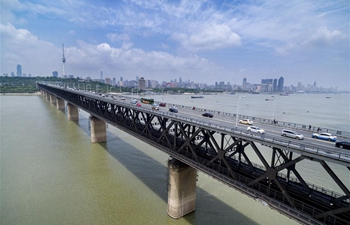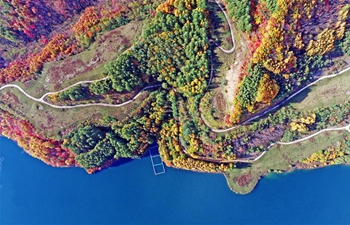by Muhammad Tahir
GHULAM KHAN BORDER, Pakistan, Oct. 19 (Xinhua) -- Pakistani forces are not only fighting militant groups but also facing the enormous task of fencing off the country's longest border with Afghanistan that runs through rugged mountains.
Pakistan has started fencing off the porous border with Afghanistan to stop illegal cross-border movement, particularly by militants, which have always been one of the major irritants in relations between the two neighboring countries.
The military took a group of Islamabad-based foreign and local media personnel to South Waziristan and North Waziristan on Wednesday to show them the fencing that is aimed at reinforcing the border with Afghanistan.
Both the tribal regions had been under the relative control of the Taliban groups and their foreign affiliates for years. However, now the military controls the areas and the focus is on securing the border. Militant groups, otherwise, would continue to take advantage of the open border and would move freely, carrying out acts of violence in both countries.
The military maintains that an effective border control system is aimed at changing the centuries-old paradigm of unregulated borders. The aim is to implement a border control system that is managed and regulated as per international best practices. Fencing is considered essential to preventing illegal movement of persons and goods, thereby checking cross border movement of terrorists and their facilitation and abettors.
"This is an ecumenical shift in the border control management system of Pakistan and Afghanistan. This border has traditionally been an open border and it has always been the intention of the government of Pakistan to control it and this was the time to do it," Major General Nauman Zakaria told the journalists, at a newly built fort in South Waziristan.
"Most of the area which is crossable, which is critically sensitive, from our point of view and from our Afghan brothers' point of view, where the control is lax, is going to be completely fenced," the commander added.
"The border forts will be completed. There will not be an inch of international border that isn't under constant observation by December of 2018," General Zakaria insisted.
On its part, Pakistan is taking measures to secure the border, but the management would be more effective if similar steps are taken on the Afghan side. Currently there is a big gap with regard to the forts and check posts and there are seven posts on the Pakistani side and only one on the Afghan side, according to the Pakistani officials.
Maj. Gen. Azhar Iqbal Abbasi, commander in North Waziristan, informed the media that fencing in his area of responsibility is being erected at a height of up-to-9000-feet above sea level (2,743 meters), which is covered by snow for almost three months in winter. A total of 55 km of a 216-km area in North Waziristan will be fenced off by December this year, with the entire area being completed by the end of 2019.
Gen. Abbasi said Pakistan is most likely to open Ghulam Khan, one of the major crossings with Afghanistan in December for trade and movement of people after a complete monitoring system is introduced. This will give a major boost to trade activities between the two countries as the military has already built a road to facilitate it.
The military said Pakistan planned to build a total of 750 forts with an inter-fort distance of 1.5 to 3 km along the Pak-Afghan border to cover frequented and unfrequented routes. Currently, 95 forts have been completed and 82 are under construction, according to the military.
Fencing along 2,344 km of fence-able Pak-Afghan border has been initiated with an estimated cost of more than 56 billion Pakistani rupees (531.43 million U.S. dollars). So far, fencing of 43 km has been completed in segments in Bajaur, Mohmand, Khyber, North Waziristan and South Waziristan tribal regions. This fence will be suitably equipped with technical surveillance means and border forts and outposts.
In addition to a total of 16 recognized routes that exist along the Pak-Afghan border, there are hundreds of unofficial routes between the two countries. Currently, only two official border crossings, namely Torkham in the Khyber tribal area and Chaman in southwestern Balochistan, have been equipped with biometric identification systems.
Both crossings will be developed as per international standards. Two other recognized crossings, namely Ghulam Khan in North Waziristan) and Kharlachi in Kurram agency will be developed by Dec. 17. The remainder of the crossings will be developed in due course, according to the military.
Military officials said a total of 73 wings of the Frontier Corps will be responsible for monitoring the border once security is handed over to them. As many as 29 wings have been established to date and 14 more will become operational by Dec. 17 and deployed in all tribal regions and Balochistan province on the border.








